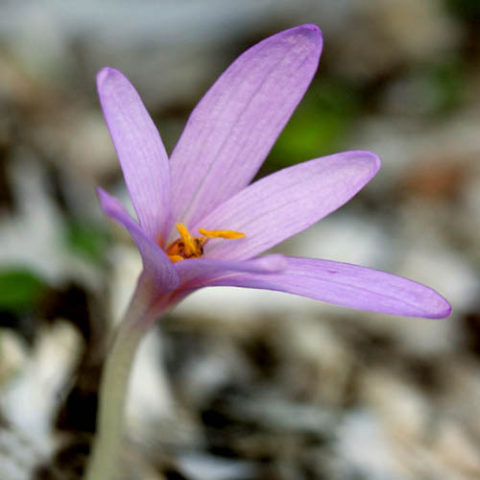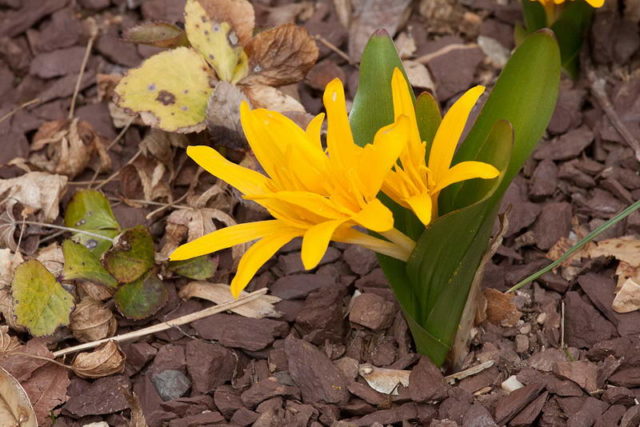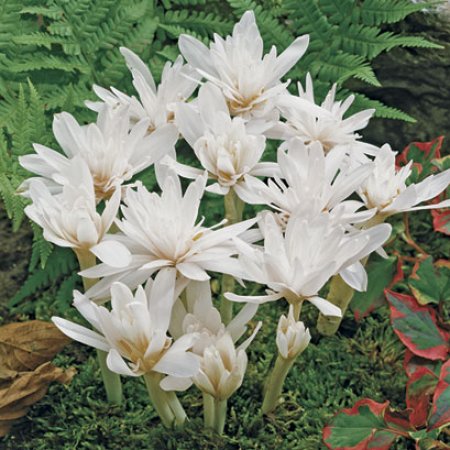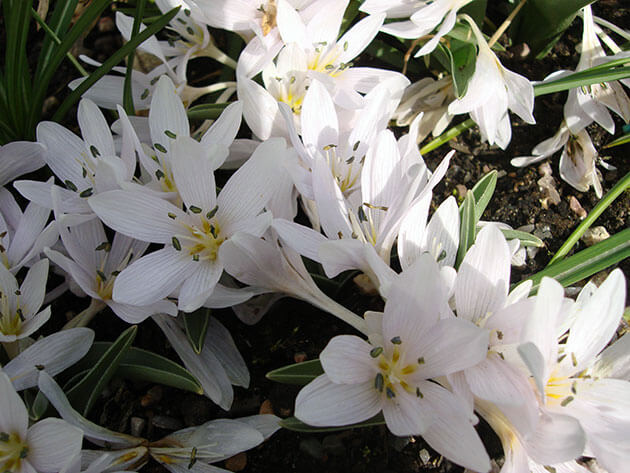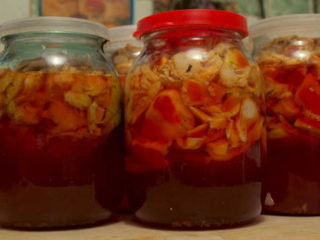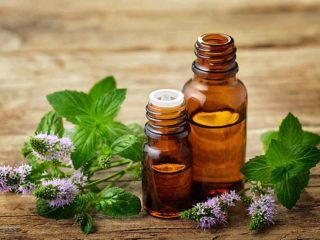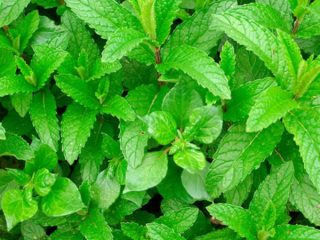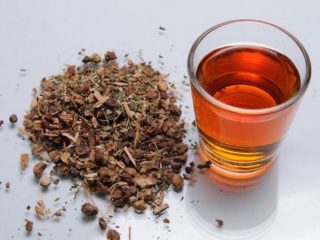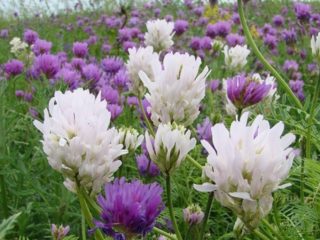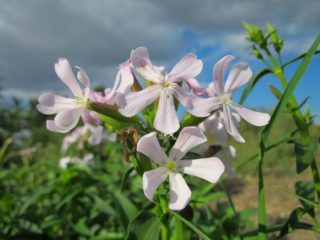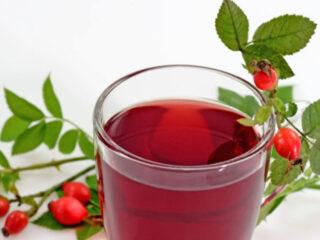Content
The herbaceous plant Colchicum splendid (Colchicum speciosum), Latin name Colchicum speciosum, is a hardy perennial with large lilac or pink flowers. The crop tolerates autumn frosts well. Early specimens bloom in late summer, others in September and even October. Colchicum is found in the wild in Asia, Iran, and the Caucasus. Cultivated species take root well in the gardens of the European part of Russia; they winter without shelter in Siberia. Colchicum splendid is listed in the Red Book of the Krasnodar Territory.
Description of the magnificent colchicum
This bulbous perennial plant with a thin, tall stem belongs to the Liliaceae family. Its length can reach up to 40 cm. Three pairs of wide oblong leaves are attached to the stem, which develop in the spring. In mature colchicum they are small at the top, their length does not exceed 3–4 cm. The lower leaf plates are large, growing up to 7 cm.
Following the leaves, an oval, multi-seeded box appears. The length of the fruit can vary from 3 to 5 cm. By July, the leaves die off and the seeds are fully ripened.
Flowers bloom in late August and early September. As you can see in the photo, the magnificent colchicum produces soft lilac or bright pink buds in the shape of a bell. There can be from 1 to 4 of them on each stem.

Late, bright flowers of colchicum serve as decoration for flower beds, rockeries, rock gardens, and are also suitable for cutting
Tender buds appear in the fall, at a time when other flower bed crops have already withered. The flowers of the beautiful colchicum look like crocuses or large snowdrops.
After pollination, the bud dies and the young ovary develops underground in winter. For this unique quality, the culture received its name - Colchicum.
The corm is oblong, its length is 7 cm, its diameter is 6 cm, and it is covered with a dark brown shell on top. Its interior is white, fleshy, with slight yellowish dots.
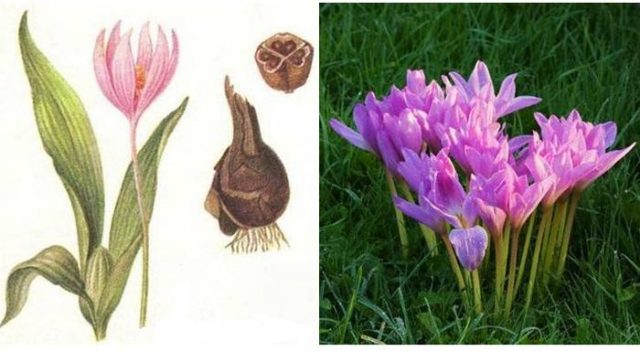
Colchicum seeds are formed from last year's ovaries, ripen by May, after which the capsule opens and the wind carries them throughout the garden.
The above-ground part of the plant is renewed annually. It consists of succulent, grassy shoots.
Colchicum beautiful is registered as a medicinal plant in the State Register of the Russian Federation.
Where does it grow
The homeland of the magnificent colchicum is the Caucasus, Türkiye, Iran. The plant lives at an altitude of 150-3000 m above sea level. Prefers chestnut, hornbeam or beech forests and elevated meadows. In the mountains, the culture is found in the lower and middle zones. In the highlands, the magnificent colchicum grows among alpine meadows. In Russia, beautiful colchicum grows well in subtropical climates; it can often be found in the steppes and meadows of the Krasnodar region. This light-loving crop does not tolerate waterlogging and stagnation of moisture.
Plant species
There are more than 100 species of colchicum. Not all of them are cultivated plants. Decorative types of colchicum are used in modern landscape designs and floristry.
Popular garden crops:
- Colchicum corsicanensis – blooms with lilac-pink small buds, there are no more than 2 of them on the plant.
The Corsican species is native to the islands of Corsica and Sardinia; the culture is found in dry meadows and silicate rock
- Colchicum yellow. Produces buds simultaneously with leaves, flowering starts from April to June. The ovaries are small, with thin petals of bright yellow color.
In the wild, the yellow species grows in the mountains near glaciers and is currently a decoration for flower beds and gardens.
- Autumn colchicum (Alboplenum) is distinguished by white, large, up to 10 cm in diameter, buds. They are creamy white in color and densely double.
Up to 8 ovaries can form on each stem of Colchicum Alboplenum
- Colchicum Hungarian - a rare representative of the species, blooming in early spring. The buds of the culture are pink-purple or white, with bright yellow anthers visible in the center. The upper surface of the leaf plate is covered with light fluff.
The Hungarian species was recently found in the mountains of Croatia and is now being successfully grown in Latvia
All types of colchicum are unusually beautiful; they bloom in late autumn, in September-October, coloring empty flower beds. For florists and landscape designers, this quality is irreplaceable; culture is often included in the design of a garden or country house.
Reproduction methods
Colchicum beautiful is propagated by corms. They are planted in the fall at a sufficient distance to ensure the growth of young underground shoots.Sometimes a lot of children are formed, in which case the magnificent colchicum stops blooming. To prevent this from happening, the tubers are dug up, divided and planted immediately after the leaves turn yellow. This period occurs at the end of July and beginning of August.
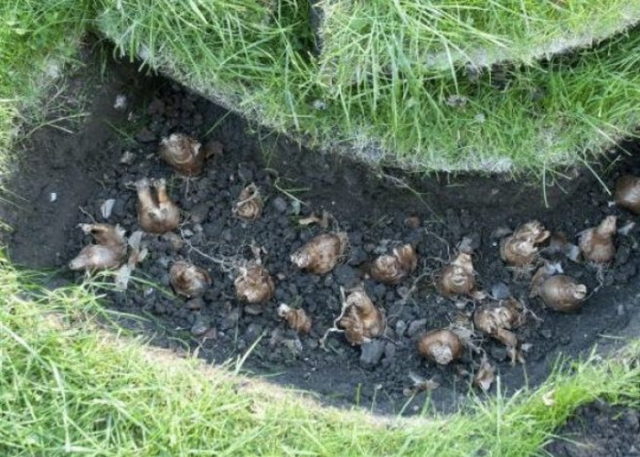
The culture grows and develops well in well-lit areas
Colchicum splendid can also be propagated by seeds. This method is labor-intensive; the first flowers will appear after 6 years. Sowing is done in the spring, immediately after collecting the seeds. The soil is first loosened, moistened, and shallow furrows are cut. Seed material is placed in the recesses at a sufficient distance. Subsequent care boils down to loosening and weeding.
Growing and care
Planting (transplanting) of the beautiful crocus is carried out in August. At this time, the plant is dormant. For planting, the soil is thoroughly loosened and watered. Once all the moisture has been absorbed, shallow furrows are cut. Small bulbs are rooted to a depth of 6 cm, the distance between them is 10 cm. Large tubers are deepened by 12 cm, indented by 20 cm.
Colchicum beautiful is replanted every 2-3 years. Old tubers should be removed and new small bulbs set aside for reproduction. If the transplantation procedure is not carried out regularly, the mother's underground shoot will become overgrown with children, there will be insufficient nutrients, and the crop will stop blooming.
Colchicum splendid is an unpretentious plant that does not require special care. But there are some nuances in its cultivation.
The beautiful colchicum does not need pruning. Gardeners remove dry leaves and buds, but experienced gardeners do not recommend doing this.To ripen, the Colchicum splendor bulb needs strength, and pruning weakens it.
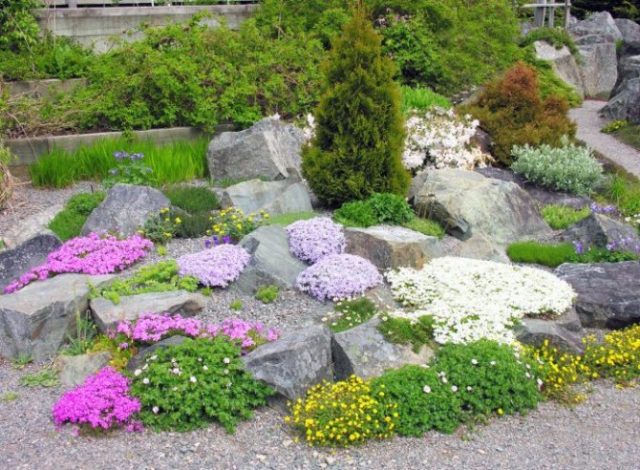
To hide the unsightly looking colchicum bush in summer, other flowering crops are planted nearby.
Water the beautiful colchicum during the flowering period if the weather outside is warm, dry. During the rainy season and off-season, the plant does not need irrigation, as it does not tolerate waterlogging of the soil.
Fertilizers are applied when the bulbs are rooting. Humus, wood ash, and superphosphate are incorporated into the soil when digging the planting area. Then the beautiful crocus is fed 2 more times - in spring and summer. Fertilizers containing nitrogen are suitable for these purposes.
The beautiful crocus is not susceptible to pests, thanks to the poisonous juice contained in the above-ground part of the plant and in the bulbs.
Useful properties and applications
The beneficial properties of Colchicum splendid are studied by pharmacognosy, one of the branches of pharmaceutics. The plant contains colchamine and colchacine. These substances are classified as caryoclastic poisons. They can prevent cell division. This property of colchamine and colchacine is used to treat cancer.
In the process of processing flowers, sugars, acids, and other active substances that have a proven therapeutic effect are obtained.

Preparations based on Colchicum splendid are used in homeopathy.
An infusion of seeds and tubers is used as a medicine for gout, rheumatism, neuralgia, and is drunk as a diuretic.
Contraindications
Some publications on traditional medicine mention that the beautiful crocus is used to treat joints. Pharmacologists do not recommend preparing medicinal preparations from colchicum at home. Scientists explain this by the fact that the culture is toxic and requires special conditions during processing.
The bulbs and seeds of the plant are especially poisonous. When ingested, poisons can cause hyperemia of the mucous membranes of the gastrointestinal tract; they inhibit kidney function and reduce the production of histamine and insulin. The poison is not destroyed even when exposed to high temperatures.
Collection and preparation
For medical purposes, only large tubers of the beautiful Colchicum are used. They are carefully removed from the ground without damaging the roots and body of the bulb. It is important to get the tuber in its entirety, since if cut, it will quickly become moldy.
The roots are cleaned of soil residues and laid out on newspaper or paper in one layer in a well-ventilated, light, dry room. During work, protect your hands with thick rubber gloves.
To preserve the plantings and propagation of the beautiful colchicum, after harvesting the bulbs, up to a dozen young plants are left in the flowerbed. Subsequent harvesting on this bed is carried out no earlier than after 5 years.
Conclusion
Colchicum splendid is a perennial flowering plant with excellent decorative qualities. The culture is unpretentious and does not require special care. It is not afraid of frost and drought, and is suitable for cultivation in the northern and southern regions.The perennial is one of the medicinal plants; the first information about it appeared in ancient written sources of India and Greece.
